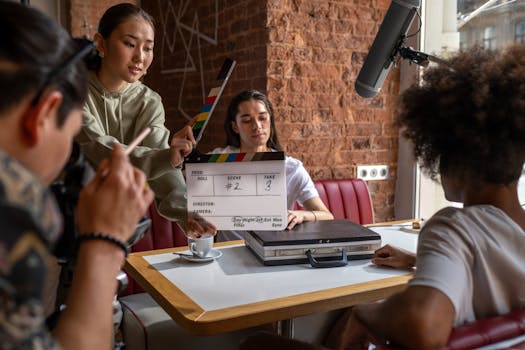
**
The creative industries are facing a seismic shift. No longer a futuristic fantasy, AI video generation is rapidly advancing, producing increasingly convincing and sophisticated content. This technological leap is prompting both excitement and trepidation, with many questioning the future of jobs and the very nature of creativity in fields ranging from filmmaking and advertising to animation and gaming. This article delves into the rapidly evolving world of AI video generation, exploring its capabilities, impact, and the implications for the future.
The Rise of AI Video Generators: From Pixelated to Photorealistic
For years, AI video generation was synonymous with low-resolution, jerky footage and obvious digital artifacts. However, recent breakthroughs in deep learning, particularly in Generative Adversarial Networks (GANs) and diffusion models, have drastically improved the quality and realism of AI-generated videos. This rapid advancement is fueled by several key factors:
- Improved algorithms: New algorithms are capable of processing and generating far more complex and nuanced visuals.
- Increased computing power: The availability of more powerful GPUs and cloud computing resources allows for the training of larger and more sophisticated AI models.
- Larger datasets: Access to massive datasets of video and image data provides the raw material for training these AI models.
These improvements mean that AI can now generate videos that are increasingly difficult to distinguish from those created by humans. We're seeing realistic human faces, fluid movements, and intricate details that were previously unimaginable with AI. This is leading to a boom in AI video generation tools, both for professionals and consumers.
Specific AI Video Generation Tools Changing the Game
Several key players are driving this technological revolution. Tools like RunwayML, Synthesia, and D-ID offer varying levels of accessibility and functionality, catering to different needs and budgets. RunwayML, for example, provides a user-friendly platform for filmmakers and video editors, while Synthesia focuses on creating realistic AI avatars for corporate videos and training materials. These tools utilize techniques like:
- Text-to-video: Generating video clips from text prompts, offering unprecedented speed and efficiency.
- Image-to-video: Animating still images to create short video clips, transforming static content into dynamic storytelling.
- Video upscaling and enhancement: Improving the quality of existing videos by increasing resolution and reducing noise.
- AI video editing: Automating tasks like color correction, noise reduction, and object removal.
These capabilities are rapidly democratizing video production, empowering individuals and small businesses to create professional-quality content without requiring extensive technical skills or budgets.
The Impact on Creative Industries: Opportunities and Challenges
The emergence of advanced AI video generation presents a double-edged sword for the creative industry. On one hand, it opens up exciting new opportunities for creativity and efficiency. On the other hand, it raises serious concerns about job displacement and the potential for misuse.
Opportunities:
- Increased productivity: AI can automate tedious tasks, freeing up human creators to focus on higher-level creative work.
- Lower production costs: AI video generation can significantly reduce the cost of video production, making it more accessible.
- New creative possibilities: AI can generate unique and unexpected visuals, pushing the boundaries of creative expression.
- Personalized content: AI can be used to create personalized video experiences tailored to individual viewers.
Challenges:
- Job displacement: The automation potential of AI video generation raises concerns about job security for video editors, animators, and other creative professionals. The industry must adapt and reskill its workforce.
- Copyright and intellectual property: The legal implications of AI-generated video content are still being debated. Who owns the copyright to a video created by an AI?
- Ethical concerns: The potential for misuse of AI video generation, such as creating deepfakes and spreading misinformation, is a significant concern.
The Future of AI Video Generation: Collaboration, Not Replacement?
The future likely lies not in a complete replacement of human creators, but in a collaborative relationship between humans and AI. AI can be a powerful tool for enhancing human creativity, accelerating workflows, and enabling new forms of artistic expression. However, it’s crucial to address the ethical and societal implications to ensure responsible development and deployment of this technology.
Key Considerations for the Future:
- Regulation and ethical guidelines: Clear guidelines are needed to address issues of copyright, deepfakes, and responsible AI development.
- Education and reskilling: Investing in education and training programs to equip creative professionals with the skills needed to work alongside AI.
- Human oversight: Maintaining human oversight in the creation and use of AI-generated video content to prevent misuse and ensure ethical considerations.
- AI-specific copyright laws: The development of legal frameworks to address the unique copyright challenges posed by AI-generated content.
The rapid advancement of AI video generation is undeniable. Its impact on the creative industry will be profound and transformative. By proactively addressing the challenges and embracing the opportunities, we can harness the power of AI to create a future where technology and human creativity thrive together. The race is on for the creative industries to adapt, innovate, and redefine their roles in this new era of AI-powered video production. The evolution of AI video generation is a story still unfolding, and its next chapter promises to be even more compelling.




















